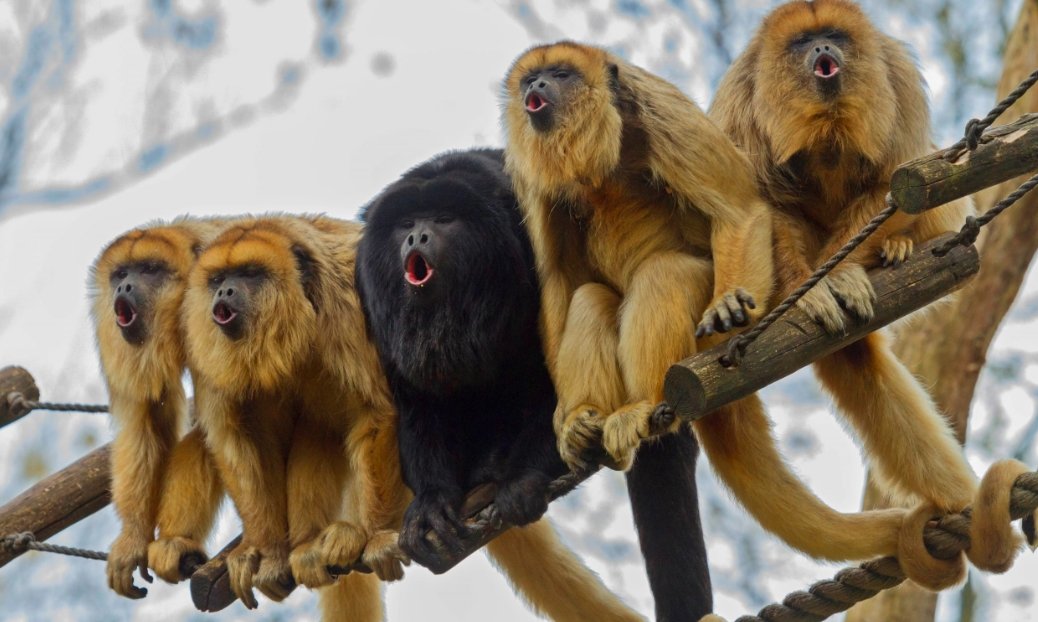Fossilized teeth discovered in Peru have provided compelling evidence that a now-extinct species of monkeys traveled over 900 miles across the Atlantic Ocean from Africa to South America on floating vegetation—some 30 million years ago. This astonishing journey challenges previous understandings of primate migration and sheds light on ancient ecological shifts.
Fossils in Peru Rewrite History
Deep in the Amazon rainforest, near the border of Peru and Brazil, paleontologists uncovered four fossilized teeth belonging to a mysterious primate species: Ucayalipithecus perdita. The discovery, detailed in a study by the University of Southern California, suggests that these small primates made a perilous voyage across the Atlantic on natural rafts of vegetation.
Erik Seiffert, a lead researcher on the study, found the teeth embedded in 32-million-year-old rock formations near the Río Yurúa. Initially, the species was believed to be exclusive to Africa, but this evidence places them firmly in South America during the Late Eocene epoch.
“It would have been extremely difficult, though very small animals the size of Ucayalipithecus would be at an advantage over larger mammals in such a situation,” Seiffert explained. “They would have needed less food and water to survive the journey.”

How Did They Cross the Atlantic?
The prevailing theory is that chunks of land covered in vegetation broke away from the African coastline during storms, forming makeshift rafts. These floating islands—complete with upright trees—provided shelter and sustenance for the diminutive primates as they drifted across the ocean.
- Distance Matters: The Atlantic was narrower back then, measuring between 930 and 1,300 miles, compared to today’s 1,770-mile span.
- Other Travelers: Only two other mammal groups are known to have made similar journeys: New World monkeys (platyrrhines) and an ancient rodent group called caviomorphs, ancestors of capybaras.
- Survival Odds: The primates likely endured violent storms, clung to branches, and scavenged floating food sources to survive the trek.
Seiffert, initially skeptical of the rafting hypothesis, changed his mind after seeing modern footage of entire mats of vegetation floating through the Panama Canal, with trees still standing upright.
Distinctive Teeth Confirm Migration
Paleoprimatologist Ellen Miller from Wake Forest University highlighted that parapithecid teeth, like those found in Peru, are highly distinctive. “There’s really no mistaking them for any other primate group,” she stated. This means the fossils unequivocally belonged to the African-originating Ucayalipithecus.
The fossil site itself is over 2,400 miles inland from the South American coast, suggesting that once these primates arrived, they thrived and spread across the continent. This inland discovery further supports the idea that their migration wasn’t just a one-off event but part of a broader evolutionary adaptation.
A Common Phenomenon?
Though it may sound bizarre, animal rafting has precedent. Lemurs and tenrecs, for instance, are believed to have reached Madagascar from mainland Africa on similar floating rafts of vegetation. However, their journey was significantly shorter—just around 260 miles.
Miller believes that scientists will now explore under what conditions such ocean crossings were most likely to occur. “I think researchers will become more interested in modeling these events,” she said. “Saying, ‘Okay, we know this happens, so under what circumstances might we expect it to occur?'”
Seiffert pointed out that the Late Eocene was a period of global cooling, which wiped out many primate species across Europe, Asia, and North America. This makes the transatlantic migration of Ucayalipithecus even more remarkable—rather than dying out, they successfully established themselves in a new world long before the concept of continents was understood by humankind.
The Missing Chapter of Primate Evolution
The discovery of Ucayalipithecus fundamentally changes our understanding of primate biogeography. It proves that primates not only had the capability to migrate across vast distances but also that they could adapt and flourish in entirely new environments.
“The discovery of Ucayalipithecus reveals that, for the last century or so, we have been missing a whole chapter in the chronicle of primate evolution in South America,” Seiffert noted.
Scientists now aim to dig deeper—both figuratively and literally—to uncover more evidence of prehistoric migration. With every fossilized tooth and bone fragment unearthed, the ancient world becomes just a little clearer.













